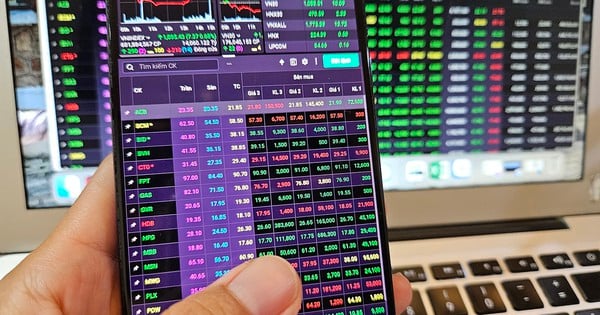| Commodity Trading Q&A (No. 67): Strategies in Trading Options Contracts (Part 2) Commodity Trading Q&A (No. 68): Strategies in Trading Options Contracts (Part 3) |
In Options Trading, the Long Call strategy is a price insurance tool that is of particular interest to businesses and investors in the commodity trading market in the event of an increase in the price of the underlying asset. So what is this strategy and how is it applied? In today's Q&A, Industry and Trade Newspaper will help readers understand this trading strategy.
 |
Long Call Option Strategy
The Long Call strategy is implemented by purchasing a call option on an underlying asset at a certain strike price. Investors implementing this strategy will profit when the price of the underlying asset increases beyond the strike price of the option without having to bear all the downside risk as when directly holding the underlying asset.
In case the price of the underlying asset increases beyond the strike price, the investor can choose not to exercise the option and let the option expire. Thus, the Long Call strategy can bring unlimited profits to the investor, on the other hand, limit the loss to not exceed the option premium. This strategy is used when the participant expects the price of the underlying asset to increase.
For example, an investor executes a Long call strategy by purchasing a December 2024 corn contract call option with a strike price of 460 cents/bushel for a premium of 45 cents/bushel.
The profit from the Long Call strategy depends on the price of the December 2024 corn contract (ZCEZ24) in the future. The following cases may occur:
Case 1: ZCEZ24 contract price is 460 cents/bushel higher
If the future price of the ZCEZ24 contract is above 460 cents/bushel, say 520 cents/bushel. The investor will then exercise the call option to buy the ZCEZ24 contract at 460 cents/bushel and the contract will be issued at 520 cents/bushel. The investor receives a profit (excluding transaction costs and other taxes/fees) calculated as the Difference between the market price of the contract and the strike price of the option - the option premium, or (520 – 460) – 45 = 15 cents/bushel.
Case 2: ZCEZ24 contract price is lower than 460 cents/bushel
If the futures price of the ZCEZ24 contract falls below 460 cents/bushel, the call option is not exercised. The investor now suffers a loss equal to the option premium, which is 45 cents/bushel. This is the maximum loss the investor can incur when implementing the Long Call strategy.
Thus, the Long Call strategy can help investors limit their losses in option premiums, while having the opportunity to receive unlimited profits.
Source: https://congthuong.vn/hoi-dap-giao-dich-hang-hoa-so-69-cac-chien-luoc-trong-giao-dich-hop-dong-quyen-chon-phan-4-331423.html







































































































Comment (0)